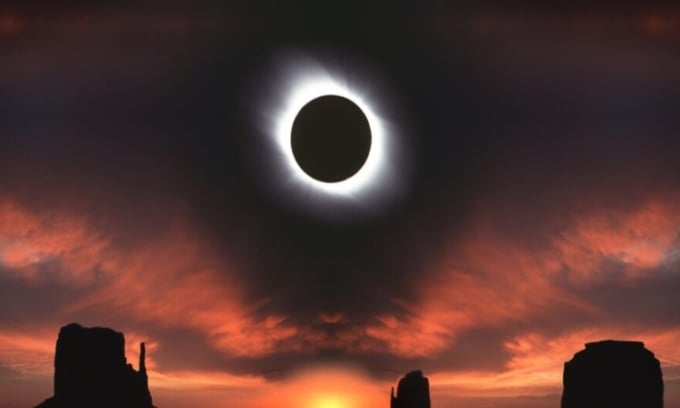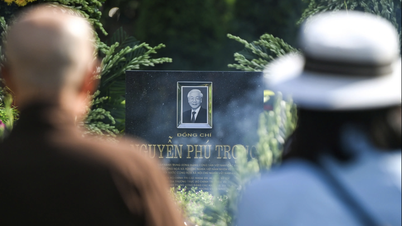Total solar eclipses are not only remarkable astronomical events, but also play a major role in many important discoveries.

Total solar eclipses provide valuable research opportunities for scientists . Photo: Sunset Magazine
Millions of people across the United States will have the chance to observe a solar eclipse on April 8. At noon local time, the sky will darken as the total eclipse appears in 15 states. Over the decades, total solar eclipses have become less mysterious and more an opportunity to test scientific theories and lead to new discoveries, according to Business Insider . Here are 7 total solar eclipses that have advanced our scientific understanding.
1. Measuring the rotation of the Earth
Some of the earliest records of eclipses date back thousands of years. Some experts believe that a stone carving on a monument in Ireland depicts an eclipse that occurred on November 30, 3340 BC Man-made markings on tortoise shells from China and a Babylonian clay tablet from more than 3,000 years ago also mention eclipses. It was through historical descriptions of eclipses that the 18th-century astronomer Edmond Halley first noticed that Earth's rotation had slowed over millennia.
2. Discover the causes of solar eclipses
Two modern scholars believe that the Greek philosopher Anaxagoras of Clazomenae recognized the role of the Moon in solar eclipses. He likely developed the theory after witnessing an annular solar eclipse on February 17, 478 BC.
Anaxagoras assumed that air pressure kept the Earth flat at the center, with the Sun, Moon, and stars revolving around it. Despite that error, he discovered the basic mechanism behind eclipses. Anaxagoras believed that the Moon reflected sunlight. His theory also correctly stated that when the Moon moved in front of the Sun, it caused a solar eclipse. Likewise, when the Earth was between the Sun and the Moon, a lunar eclipse occurred. Anaxagoras also used the shadow cast by the Moon during a solar eclipse to estimate its size, but his calculations came out much smaller than it actually was.
3. Estimate the distance from Earth to the Moon
On March 14, 189 BC, a total solar eclipse passed over northern Türkiye. The Greek astronomer Hipparchus was just a child at the time, but he may have witnessed the event. Years later, Hipparchus was able to use others' descriptions of the eclipse to create one of the most accurate mathematical estimates of the distance from Earth to the Moon. Although Hipparchus's firsthand account is lost, a fourth-century scholar details how he used the information.
The astronomer estimates the distance between the total eclipse site in what is now Türkiye and Alexandria, Egypt (where one-fifth of the Sun was visible) to calculate. Based on the calculation, Hipparchus came up with several estimates, including 452,848 km, which was not far from the exact distance of 384,400 km.
4. Predict the path of the eclipse
In the 11th or 12th century, Mayan astronomers made a remarkable prediction for their time. They calculated that a total solar eclipse would occur in 1991, and their prediction was off by just one day. It wasn't until centuries later that humans were able to make more accurate predictions. In the 18th century, Edmond Halley, famous for discovering the comet that bears his name, created a map that predicted the path of the March 5, 1715, eclipse with incredible accuracy (within four minutes), based on Isaac Newton's laws of universal gravitation.
5. Helium discovery
Helium is abundant in the universe but rare on Earth. A solar eclipse helped astronomers discover the element. French astronomer Pierre Jules César Janssen traveled to India to observe the solar eclipse on August 18, 1868. He used a spectroscope to separate sunlight into its spectrum.
Janssen saw a yellow line with a wavelength that was unlike any other element. Around the same time, British astronomer Norman Lockyer developed an instrument to observe the Sun even when there was no eclipse. He also saw a similar line. Lockyer called the mysterious element helium. It took scientists two decades to see it on Earth, in experiments with lava from Mount Vesuvius and uranium.
6. Proving Einstein's Theory of Relativity
Astronomer James Craig Watson was certain he had found evidence of a new planet during an 1878 solar eclipse. Located between the Sun and Mercury, Vulcan can only be seen when the Moon is hidden by the giant star. Several more eclipses followed, but no evidence of Vulcan was found. In 1915, Albert Einstein explained Mercury's unusual orbit using general relativity. This explanation fits the data better than a mysterious, hard-to-observe planet.
However, Einstein's theory of relativity had no scientific proof until the solar eclipse of May 29, 1919. The physicist showed that the Sun's gravity bends the light from nearby stars. In 1919, there were expeditions to Principe, an island off the coast of Africa, and Brazil. As the Moon obscured the Sun, astronomers took photographs. The stars appear to shift position relative to the reference image. The new positions show that the Sun bends light as Einstein predicted.
7. Studying eclipses from space
The Gemini 12 crew of Jim Lovell and Buzz Aldrin were the first to witness a total solar eclipse from space. On November 12, 1966, the eclipse moved from Peru to Brazil, and the two astronauts flew near totality. It was a coincidence. Aldrin's photos were a little blurry. Four years later, television stations reported the solar eclipse of the century on March 7, 1970. NASA also launched more than 20 rockets to study ultraviolet radiation and X-rays from the Sun during the event. They will continue to use rockets to collect data on the April 8 eclipse.
An Khang (According to Business Insider )
Source link











































































































Comment (0)